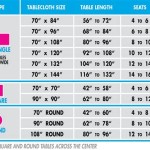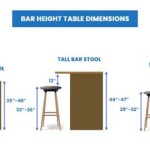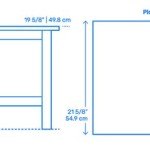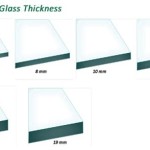How To Set Up a Pool Table Triangle
Setting up a pool table triangle appears simple, yet a precise setup is crucial for an accurate and enjoyable game of pool. A poorly racked set of balls can lead to inconsistent breaks and ultimately affect the quality of play. This article provides a comprehensive guide to achieving a tight and professional rack, ensuring a fair start to every game.
The primary objective of racking is to create a tightly packed triangle of balls, where each ball is touching its neighbors. This eliminates gaps and prevents balls from shifting during the break. A well-racked triangle maximizes the transfer of energy from the cue ball to the object balls, leading to a more powerful and controlled break.
Choosing the Right Triangle
The foundation of a good rack begins with selecting the appropriate triangle. Pool table triangles are typically constructed from wood, plastic, or metal, each offering varying degrees of precision and durability. Wood triangles, often made of hardwood like oak or maple, are traditional and aesthetically pleasing. However, they can be susceptible to warping over time, especially in humid environments. Plastic triangles are more resistant to warping and are generally more affordable. Metal triangles, although durable, can sometimes scratch the surface of the pool table if not handled carefully.
Beyond the material, the internal dimensions of the triangle are critical. The triangle must be sized correctly to accommodate the regulation-sized pool balls, which are typically 2 1/4 inches in diameter. A triangle that is too large will result in gaps between the balls, while one that is too small will make it difficult to achieve a tight rack. Some triangles feature a beveled edge on the inside, which aids in achieving a tighter rack by allowing the balls to sit more snugly against the frame.
Consider the weight of the triangle. A heavier triangle can help maintain the rack’s position on the cloth while arranging the balls. Some triangles even have rubber feet on the bottom to prevent slipping and protect the table surface.
The Racking Process: Step-by-Step
The actual racking process requires attention to detail and consistent technique. The following steps outline the procedure for creating a professional-quality rack:
Step 1: Positioning the Triangle: Place the triangle at the designated racking area, typically marked on the pool table cloth. The apex of the triangle, where the head ball is positioned, should be placed on the foot spot. The foot spot is usually indicated by a small dot or marker on the cloth. Ensure the base of the triangle is parallel to the foot rail of the table.
Step 2: Arranging the Balls: Use a standard ball set consisting of fifteen object balls and one cue ball. Begin placing the balls inside the triangle, ensuring that they are oriented randomly. The head ball, which is often the one ball in 8-ball, should be placed at the apex of the triangle, directly on the foot spot.
Step 3: The 8-Ball Position: In 8-ball, the 8-ball must be positioned in the center of the triangle. This means it should be located in the exact middle of the rack, surrounded by other object balls. This is a standardized rule in most 8-ball variations.
Step 4: Stripe and Solid Balls: In 8-ball, one stripe ball and one solid ball should be positioned on each of the bottom corners of the triangle. This ensures a balanced distribution of ball types at the start of the game. Randomly select a stripe and a solid and place them accordingly.
Step 5: Achieving a Tight Rack: The key to a successful rack is ensuring that the balls are touching each other. Begin by gently pushing the balls together from the sides of the triangle. Apply even pressure to all sides, working towards the center. Avoid excessive force, as this can damage the balls or the table cloth. Use your fingers to individually adjust the balls, ensuring that each ball is touching its neighbors. A slight rocking motion can help settle the balls into a tighter configuration.
Step 6: Removing the Triangle: Once the balls are tightly packed, carefully slide the triangle upwards, keeping the balls firmly in place. Lift the triangle straight up to avoid disrupting the arrangement. A slight upward motion is often more effective than sliding it out horizontally. Observe the final rack to ensure that the balls have not shifted during the removal of the triangle.
Step 7: Verification: Visually inspect the racked balls. Are there any noticeable gaps? If so, repeat the racking process, paying particular attention to applying even pressure and ensuring that all balls are touching. A properly racked triangle will appear as a solid, unified mass of balls.
Techniques for a Superior Rack
Beyond the basic steps, several techniques can further enhance the quality of the rack:
Chalking the Triangle: Applying a small amount of chalk to the inside edges of the triangle can help create a tighter rack. The chalk acts as a lubricant, allowing the balls to slide against the triangle more easily. Use a small amount of chalk and wipe away any excess to prevent marking the balls or the table cloth. Be cautious, as excessive chalk can transfer to the balls and affect their trajectory.
Using a Racking Template: A racking template is a thin, flat piece of material, typically made of plastic or cloth, that is placed beneath the balls during the racking process. The template has precisely sized holes to hold each ball in place, ensuring a perfect rack every time. These templates are particularly useful for novice players or in settings where consistency is paramount. The template is removed after the balls are positioned, leaving behind a tightly packed rack.
The "Tap" Method: After arranging the balls within the triangle, gently tap the apex ball with your hand or a small object. This slight impact can help settle the balls and eliminate any remaining gaps. Avoid striking the ball with excessive force, as this can disrupt the entire rack.
Cloth Condition: The condition of the pool table cloth significantly impacts the ease of racking. A clean, smooth cloth will allow the balls to slide more easily and achieve a tighter rack. Regularly brush the cloth to remove any dust or debris. Avoid spilling liquids on the table, as this can cause the cloth to become sticky and affect the balls' movement.
Practice and Consistency: Mastering the art of racking requires practice and consistency. Repeat the racking process multiple times, focusing on refining your technique and identifying any areas for improvement. The more you practice, the more consistent and accurate your racks will become. This will contribute to a more enjoyable and competitive game of pool.
By following these guidelines and practicing consistently, players can significantly improve the quality of their racks and ensure a fair and enjoyable game of pool. A tight, well-racked set of balls is the foundation for a successful break and a satisfying playing experience.

How To Rack A Pool Table 10 Steps With S Wikihow

How To Rack A Pool Table 10 Steps With S Wikihow

How To Rack Up Pool Balls Hamilton Billiards Snooker Blog

How To Rack A Pool Table 10 Steps With S Wikihow Balls

How To Rack Up Pool Balls Hamilton Billiards Snooker Blog

How To Rack A Pool Table

The Official 8 Ball Rack Setup Proper Way Explained

How To Rack A Pool Table 10 Steps With S Wikihow

Official Way To Rack Up 8 Ball Pool Life S Tv

The Official 8 Ball Rack Setup Proper Way Explained
Related Posts








